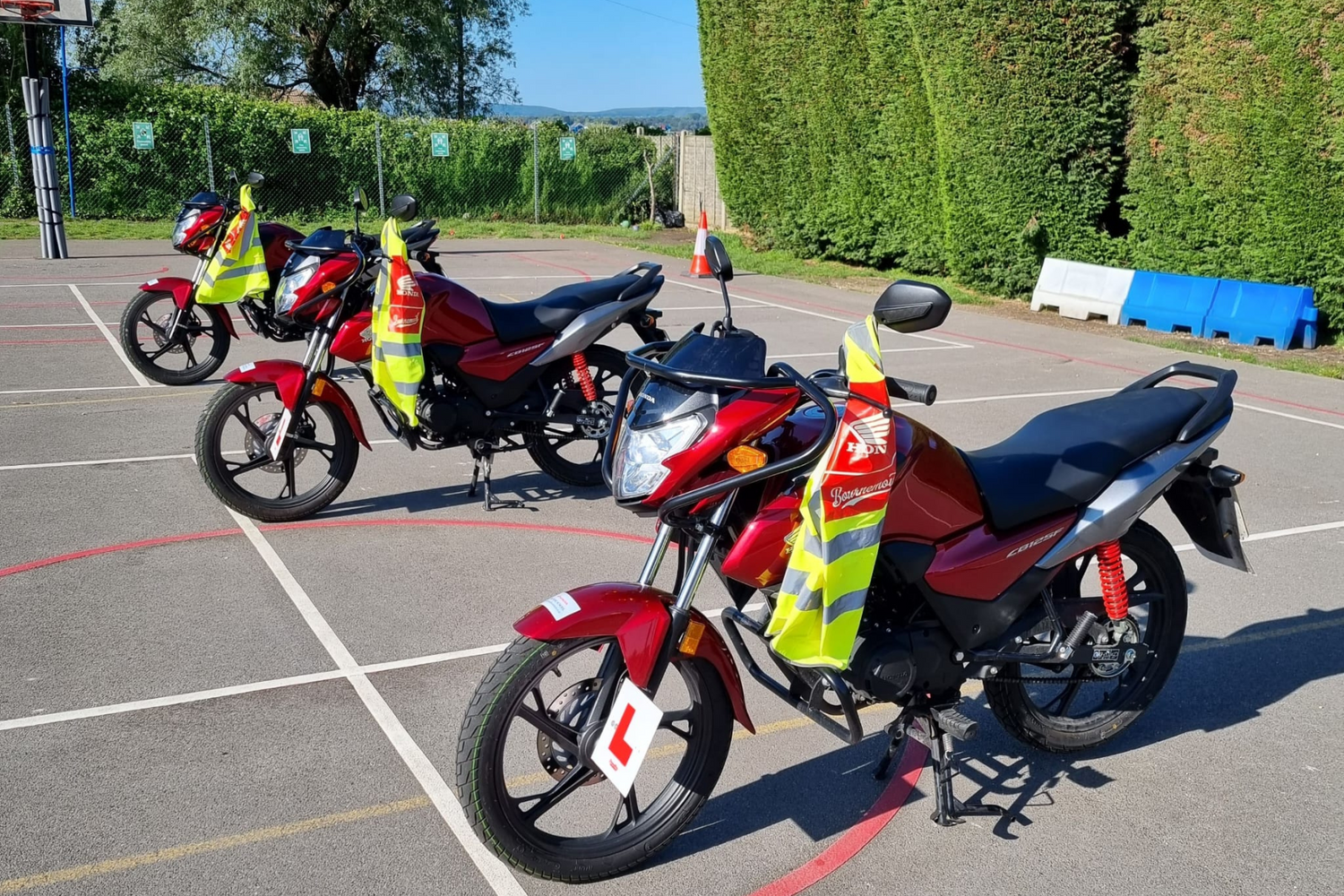Whether you're a complete beginner or brushing up on the basics, the CBT is essential. Let’s break down what to expect during the CBT and how you can prepare for a smooth, successful day.
What is the CBT?
Compulsory Basic Training (CBT) is a course designed to teach beginner motorcyclists or moped riders the basic skills and road safety principles required to ride on public roads. It’s a legal requirement for anyone wishing to ride a moped or motorcycle up to 125cc on UK roads, unless you hold a full car driving licence and passed your test before February 2001, in which case you can ride a moped without a CBT.
The CBT is not a test, but rather a training day to ensure you can ride safely. Once you pass, you'll be able to ride with L-plates (or D-plates in Wales), although this won’t qualify you to ride on motorways or carry passengers. Your CBT certificate is valid for two years, after which you'll need to either take it again or progress to a full motorcycle licence.

What to Expect at your CBT on the Day
The CBT course is typically completed in one day and covers five key sections. Let’s walk through each part:
Introduction and Eye Test
The day begins with an introduction to the course and an eye test to ensure you meet the minimum eyesight requirement for riding (being able to read a number plate from 20.5 metres). You’ll also go over basic safety gear, such as helmets, gloves, and jackets, which are usually provided by the training centre if you don’t have your own.
On-Site Training
This is where you’ll get familiar with your bike or scooter. You’ll learn about the controls—throttle, brakes, clutch, indicators, etc.—and how to perform simple safety checks (known as POWDER: Petrol, Oil, Water, Damage, Electrics, Rubber).
On-Site Riding
Once you’re comfortable with the bike’s controls, it’s time to ride! On a closed-off training area, you’ll practice:
- Starting and stopping the bike
- Using the gears (if you’re on a geared bike)
- Slow control (balancing and riding at low speeds)
- Making U-turns and figure-eights
- Braking safely
This part helps you build confidence in handling the bike and controlling it at different speeds.
Road Training
Before heading out onto the road, your instructor will walk you through important road safety rules and riding theory, such as:
- How to position yourself on the road
- Understanding road signs and markings
- Basic traffic laws, including how to handle roundabouts and junctions
- The "Lifesaver" look—a crucial over-the-shoulder check for blind spots before changing direction.
On-Road Riding
The final part of the CBT is where you’ll head out onto real roads with your instructor. You’ll ride in normal traffic for about two hours, practicing everything you’ve learned. Your instructor will be in radio contact to guide and assess you as you demonstrate skills like:
- Joining and leaving traffic safely
- Turning at junctions and roundabouts
- Obeying traffic signals and speed limits
- Practicing defensive riding to anticipate hazards
Once you complete this stage successfully, you’ll receive your CBT certificate, and you’ll be free to ride on public roads.

How to Prepare for Your CBT
Preparing for your CBT can make the experience more enjoyable and help ease any nerves. Here are some tips to get you ready for your first day:
Get the Right Gear
You’ll need to wear the right safety gear on your CBT day. While some training centres provide equipment, it’s good to have your own. Essentials include:
- Helmet: Must meet UK safety standards.
- Motorcycle jacket and gloves: To protect against abrasions and impacts.
- Sturdy footwear: Motorcycle boots or ankle-high boots with good grip.
Brush Up on the Highway Code
Since you’ll be riding on public roads during your CBT, it’s a good idea to review the Highway Code beforehand. Familiarising yourself with traffic rules, road signs, and markings will help you feel more confident when you hit the road.
Get Comfortable on a Bicycle
If you haven’t been on two wheels for a while, practicing on a bicycle can help you feel more comfortable with balance and steering before your CBT.
Take an Introductory Lesson
Some riding schools offer introductory lessons for complete beginners. This can help you get a feel for riding a motorcycle in a low-pressure environment before your CBT day. We can help!
Stay Calm and Focused
Remember, the CBT is not a test; it’s designed to help you learn. Instructors are there to support you and won’t rush you through any stage until you’re ready. Stay calm, take your time, and don’t be afraid to ask questions if you’re unsure about something.
After the CBT: What’s Next?
Once you’ve completed your CBT and received your certificate, you can ride a moped or motorcycle up to 125cc with L-plates. Your next steps could be:
- Gaining confidence and experience on the road.
- Considering advanced training or working towards your full motorcycle licence (A1, A2, or A, depending on your age and bike size).
The CBT is a stepping stone to becoming a skilled and safe rider. With the right preparation, you can approach your first day with confidence and excitement. Safe riding!
Understanding the CBT process is key to making your first experience on a motorcycle or moped a positive one. By knowing what to expect and how to prepare, you’ll be ready to tackle the day with confidence and set the foundation for a lifetime of safe and enjoyable riding. If you’re ready to get started, contact us to book your CBT and begin your journey on two wheels!




